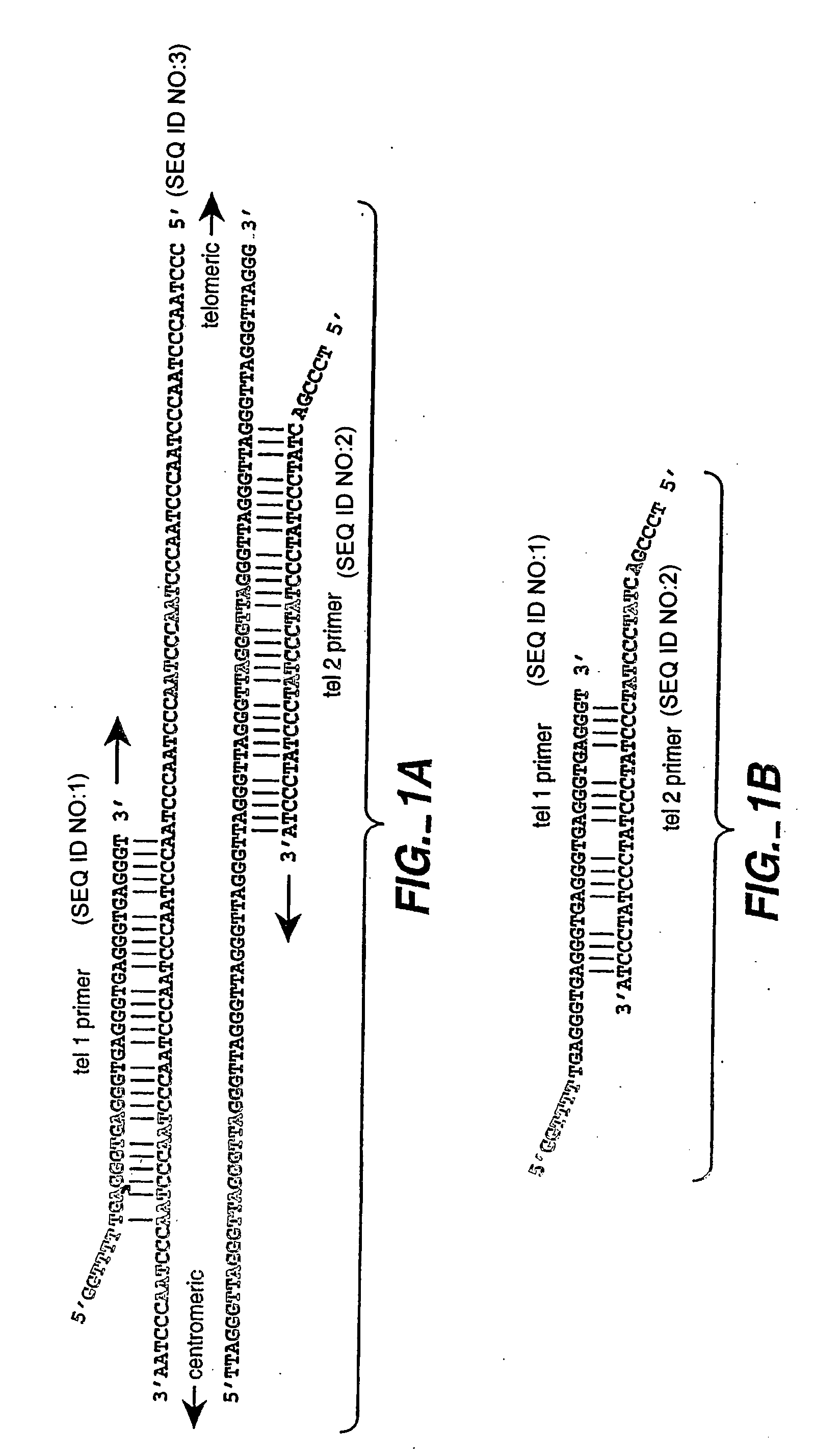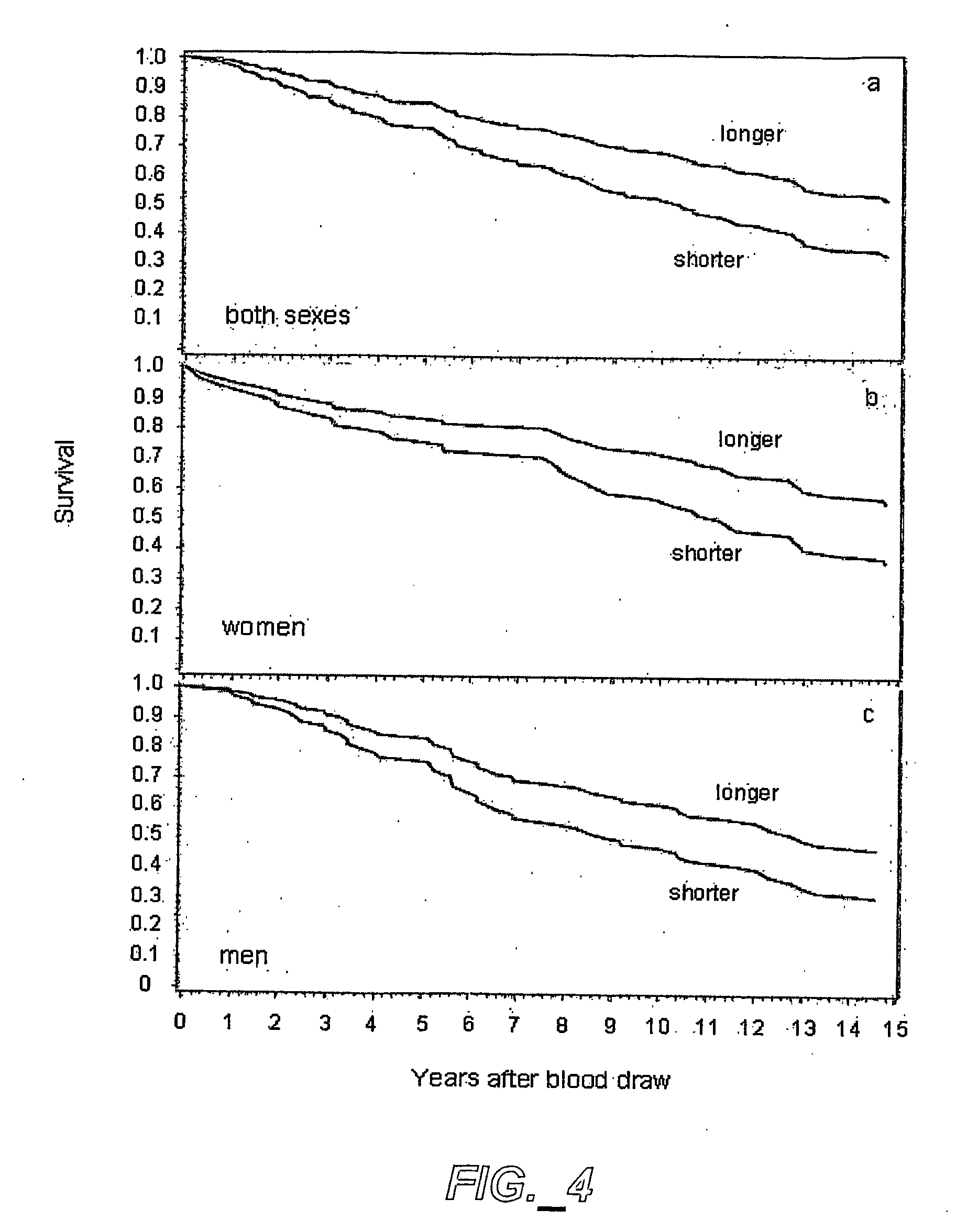Methods of predicting mortality risk by determining telomere length
a telomere length and telomere technology, applied in the field of methods of predicting mortality rates, can solve the problems of poor wound healing, skin dyspigmentation, and the 3′ region of the linear chromosome not being replicated
- Summary
- Abstract
- Description
- Claims
- Application Information
AI Technical Summary
Benefits of technology
Problems solved by technology
Method used
Image
Examples
example 1
Determining Average Telomere Length
[0083] Genomic DNA was extracted from blood samples by standard procedures. The samples used to compare quantitative PCR vs. Southern blot approaches to telomere measurement were donated by 21 unrelated individuals (11 women and 10 men, age range 61-94 years) from Utah families that are part of the Centre pour les Etudes du Polymorphisme Humaine (CEPH) collection used worldwide for building the human genetic linkage map (White, R. et al. (1985) Nature 313: 101-105). Purified DNA samples were diluted in 96-well microtiter source plates to approximately 1.75 ng / μl in 10 mM Tris-HCl, 0.1 mM EDTA, pH 7.5 (final volume 300 ul per well), heated to 95° C. for 5 minutes in a thermal cycler, quick-chilled by transfer to an ice-water bath for 5 minutes, centrifuged briefly at 700×g, sealed with adhesive aluminum foil, and stored at 4° C. until the time of assay.
[0084] Real time quantitative PCR on the extracted DNA samples are performed on separate 96 well...
example 2
Telomere Length and Mortality in Humans
[0094] The 143 research subjects were unrelated Utah residents aged 60-97 years, who donated blood from 1982-1986 to contribute to the CEPH (Centre d'Etude du Polymorphisme Humain) collection of cell lines used to build the human genetic linkage map (White R. et al, Nature 313: 101-105 (1985)) and for whom follow-up survival data were available. Birth and death dates were obtained from the Utah Population Database (UPDB), and from the Social Security Death Index. There were 101 known deaths by mid-2002. For the remaining 42 subjects, date at which they were last known to be alive was established post blood draw. The survival analysis by cause of death (from Utah death certificates coded to the International Classification of Diseases, 9th and 10th revisions) was restricted to the 124 individuals with UPDB identification numbers. This study was approved by the University of Utah's Institutional Review Board.
[0095] Relative TLs in total genomic...
PUM
| Property | Measurement | Unit |
|---|---|---|
| Tm | aaaaa | aaaaa |
| Tm | aaaaa | aaaaa |
| Tm | aaaaa | aaaaa |
Abstract
Description
Claims
Application Information
 Login to View More
Login to View More - R&D
- Intellectual Property
- Life Sciences
- Materials
- Tech Scout
- Unparalleled Data Quality
- Higher Quality Content
- 60% Fewer Hallucinations
Browse by: Latest US Patents, China's latest patents, Technical Efficacy Thesaurus, Application Domain, Technology Topic, Popular Technical Reports.
© 2025 PatSnap. All rights reserved.Legal|Privacy policy|Modern Slavery Act Transparency Statement|Sitemap|About US| Contact US: help@patsnap.com



